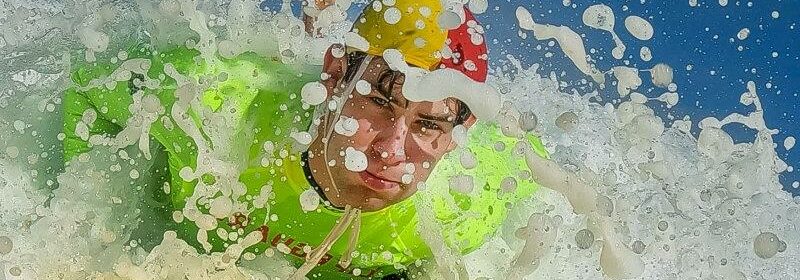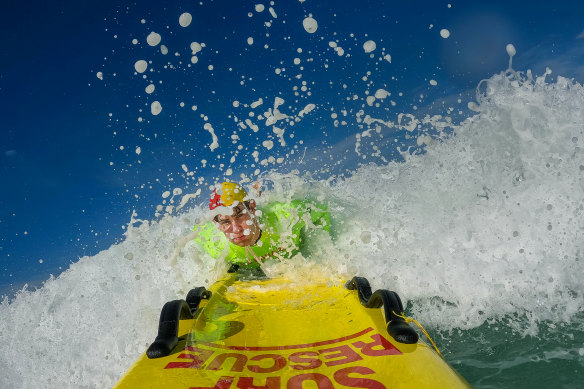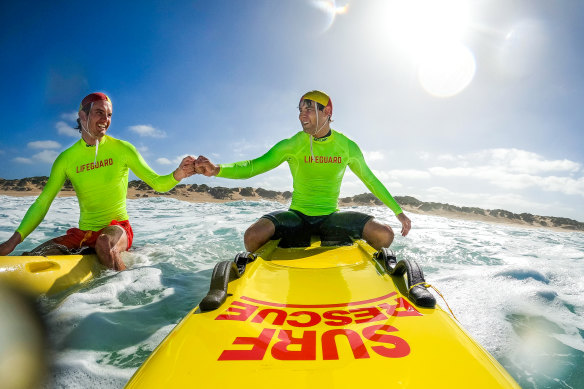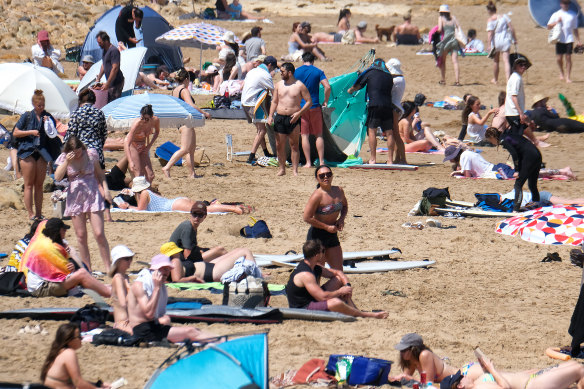Powerful rips, big waves and wildly popular: Victoria’s busiest beach for rescues

Key points
- Gunnamatta has been the busiest beach for rescues this summer.
- A 20-year-old man is still missing after he entered the water at Gunnamatta last month.
- Last year Lorne was the busiest patrolled beach for lifesavers.
Lifesavers have performed more rescues at Gunnamatta than any other beach in Victoria this summer, with large crowds drawn to the coastal destination despite its powerful rips, big waves and unpredictable conditions.
The Mornington Peninsula beach topped the number of rescues with 61, eclipsing the 36 rescues carried out at the state’s second-busiest beach in Portsea.
Lifeguard Jack Liszukiewicz taking to the waves in Gunnamatta.Credit:Joe Armao
The number of rescues at Gunnamatta almost doubled in a year, up from 31 last year.
Despite the relatively cool weather this summer, lifesavers conducted 551 rescues from mid-November to the end of January statewide, an almost 7 per cent increase on the previous year.
There have been 31 drownings from July 1 last year to January 24.
Lifeguard Conor Morone said Gunnamatta was large and open, with many interspersed rips and sandbars which often changed throughout the day.
“It’s hard to know what to expect each day you come to work or volunteer on a shift,” he said.
Morone was on the beach when a 20-year-old man disappeared after entering the water outside the patrolling period last month. Lifesavers and a bystander were able to save his brother and father but the man remains missing, presumed dead.
Morone is certain the outcome would have been far worse if lifesavers had not been there, but he has experienced conflicting emotions since that tragic evening.
“In the moment, I was really proud of the work that some of the volunteer lifesavers did,” he said. “But you reflect on what else could be done in those situations. Sometimes there isn’t much of an answer.”
Lifeguards Conor Morone and Jack Liszukiewicz take a breather between waves at Gunnamatta. Credit:Joe Armao
Morone urged beachgoers to stay between the flags but said swimmers often wanted to avoid crowds, so they chose to swim outside patrolled areas.
As The Age has previously reported, Victoria suffered the highest number of drownings over the Christmas period in almost 20 years with four people dying, including a teenager, at Lorne on Christmas Day and another drowning at Mordialloc on Boxing Day.
Last summer, Lorne was the busiest beach for lifesavers with 74 rescues, while Gunnamatta was second.
Lifeguard Jack Liszukiewicz was patrolling Gunnamatta on New Year’s Eve when large waves and a changing tide washed one family off the back of a sandbank. Realising they were in trouble, the parents waved desperately to lifesavers.
Crowds flocked to coastal hotspots such as Torquay during the first summer break without restrictions in three years.Credit:Luis Ascui
Liszukiewicz rushed to help, plucking a two-year-old child from his father’s hands and allowing the parents to regain their footing. Lifesavers then led the family out of the deep trough that threatened to drown them, averting another summer tragedy.
“The child was crying, as you’d expect,” Liszukiewicz said. “But once they handed over the child, everyone was a lot more relaxed. It just shows the conditions can change, and you have to respect the ocean.”
Life Saving Victoria general manager of lifesaving services Liam Krige said the rescue figures did not necessarily indicate Gunnamatta was the most dangerous beach, but rather it was the site of the most interventions.
“The most dangerous location is an unpatrolled one,” he said.
Krige said the rescue numbers tended to fluctuate from year to year but crowd numbers could affect the rescue figures, as well as more predominant easterly wind this summer, which could result in more rips.
Of the 31 drownings, 45 per cent occurred at inland waterways, 42 per cent in homes and 13 per cent at coastal waterways.
This year, Life Saving Victoria also carried out patrols at inland waterways, including Lake Eildon, Lysterfield Lake, Lake Nagambie and Lake Waranga over the January 26 long weekend.
They performed nine rescues.
Krige said inland swimming places often appeared benign, but dangers such as fast currents and concealed objects often lurked.
“The risks aren’t that obvious,” he said. “The water looks calm, but there are many hidden dangers.”
Earlier this week, Dylan Rust was unperturbed by Gunnamatta’s daunting reputation as he took to the water for a surf right near the red and yellow flags.
“It’s good fun if you’re a confident swimmer,” he said.
His friend, Cooper Colson, said he was reassured by the presence of lifeguards.
“You’re in safe hands, but you’ve got to take a bit of responsibility,” he said.
The Morning Edition newsletter is our guide to the day’s most important and interesting stories, analysis and insights. Sign up here.
Most Viewed in National
From our partners
Source: Read Full Article


